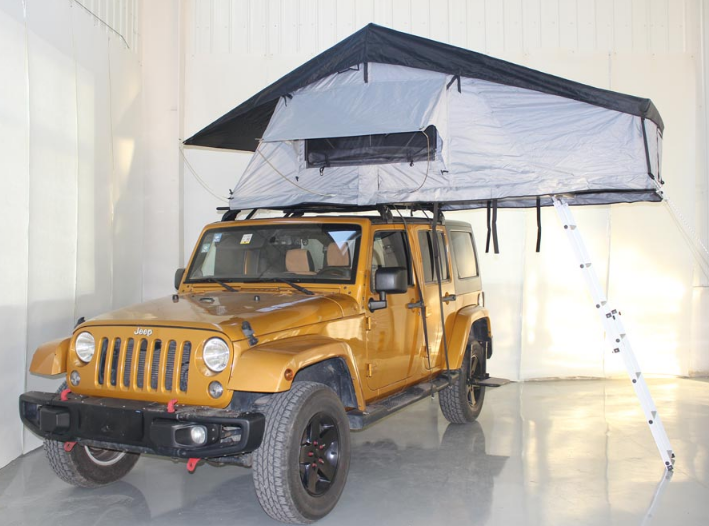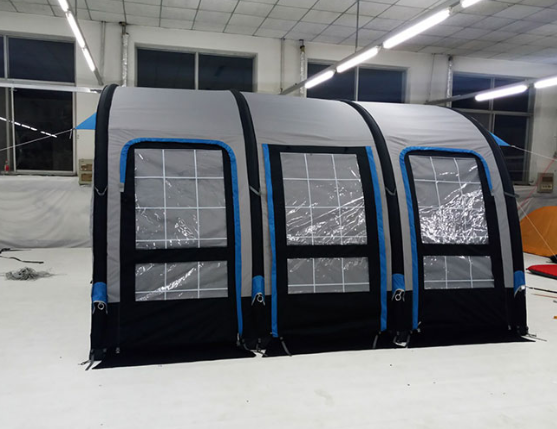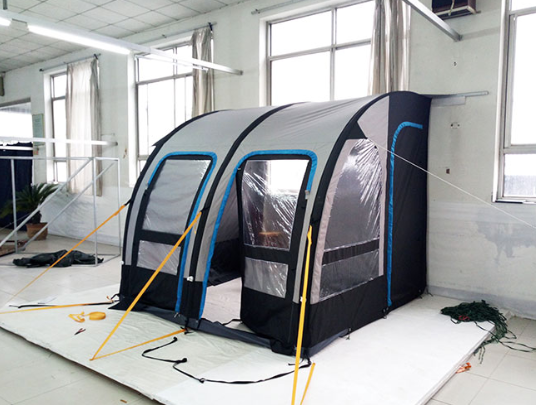Roof top tents, when mounted on vehicles, serve as mobile basecamps, ready to accompany you on your next adventure. Setting up these tents is a breeze, and they offer a combination of durability and comfort for a restful night's sleep. Compatible with various vehicle types, including SUVs, crossovers, wagons, pick-ups, vans, and trailers, they provide versatility for outdoor enthusiasts.
Why Choose a Roof Top Tent?
Roof Top Tents, also known as car top tents or overland tents, are indispensable additions to overlanding equipment, ensuring campers remain protected from unexpected inclement weather and inquisitive wildlife. They offer a safer and more robust alternative to ground tents, providing superior sleeping arrangements, panoramic views of the campground, and ample storage for sleeping bags and other camping essentials. Equipped with their own mattresses, these tents can comfortably accommodate 2-5 people, depending on the tent type. While roof top tents may come with a higher price tag, for most overlanders, they represent a worthwhile investment in terms of the benefits they offer.
What to Consider When Purchasing a Roof Top Tent?
With a plethora of roof top tent options currently on the market, the key lies in selecting the one that suits your needs best. Factors to weigh include the number of occupants, environmental conditions at your camping destination, storage space for bags and gear, pet accommodation, and other relevant considerations.
If you've decided to invest in a roof top tent, it's worthwhile to aim for the best option available. While the process may seem daunting, knowing your specific requirements makes narrowing down your choices more manageable. To assist you, we've compiled some of the most common factors that buyers take into account when acquiring a new roof top tent.
Here are 15 things to look for when purchasing a roof top tent.
Tent’s weight
Living space or mattress size
Budget
Rack and car compatibility
Mounting system and installation procedure
Shipping costs (we have free shipping on most all tents)
Tent material
Accessories included
Ventilation
Design and color
Brand name
Service and warranty
Annex availability
Weather conditions
Tent type: soft-shell, hard-shell, or hybrid

Roof Top Tent Styles
Although the market offers numerous roof top tent styles, they can generally be categorized into three types: soft shell, hard shell, and hybrid. The names themselves provide a glimpse of each type's appearance, but let's explore them in more detail by discussing each one individually.
Soft Shell Roof Top Tent
Soft shell roof top tents are essentially ground tents mounted on the roof of your vehicle. These tents are foldable and utilize either manual or electronically-assisted unfolding procedures to expand the internal support frame, typically composed of aluminum poles, shaping the tent. Typically constructed with waterproof materials such as canvas, nylon, or polyester for the body and overhead shelter, they also feature a durable floor and a mattress for added comfort.
Hard Shell Roof Top Tent
Hard shell roof top tents are collapsible box-like structures comprised of two sturdy bases at the top and bottom. These bases are commonly constructed from materials like fiberglass, aluminum, or solid plastic. When deployed, they serve as the roof and floor of the tent, and when closed, they provide protective storage for the bedding within the tent. Opening them is a simple process involving releasing a few safety hatches and utilizing pressurized gas struts or crank mechanisms. Hard shell tents typically come in two styles: pop-up or wedge.
Pop-up tents elevate the top shell uniformly, creating a rectangular or square form for the tent, while wedge tents, also known as clamshell tents, open up by creating an angled roof that provides one area with more vertical space.
Hybrid Roof Top Tent
Hybrid roof top tents occupy a middle ground between soft shell and hard shell variants. These tents feature a hard shell, waterproof fabric walls, and a fold-out section that provides additional space when set up. Hybrid tents offer ease of setup comparable to soft shell tents, while their takedown speed matches that of hard shell tents.
This particular roof top tent style combines advantages found in both hard and soft shell tents. However, like any product, it comes with a few drawbacks to consider. Explore the pros and cons outlined below.
Roof Top Tent Sizes
Choosing the appropriate size for your roof top tent is a crucial consideration. It involves assessing the amount of space you require for your tent, taking into account the differing needs of a family of five versus a solo camper or a couple.
Another factor to consider is the type of vehicle you own, as roof top tents designed for jeeps or heavy trucks might be excessive for smaller cars. The tent's size also dictates the kind of mounting tools (roof racks and crossbars) needed.
Furthermore, the decision between a hard shell or soft shell tent impacts the tent's size, with the former typically accommodating fewer occupants, limited to up to four. To assist you in making an informed choice, we've compiled a straightforward comparison of roof top tents, including their dimensions, materials, and more.
Small Roof Top Tent Vs Large Roof Top Tent
Small Roof Top Tents
Designed for solo adventurers and couples, small roof top tents offer easy setup and folding. With a raised height of up to 3.5 feet and a weight ranging from 100 to 115 lbs, these tents are constructed from lightweight fabrics and materials, maintaining durability while being more budget-friendly due to their size. Typically accommodating 2-3 people, they are versatile and compatible with almost all types of vehicles.
Large Roof Top Tents
Ideal for larger groups or families, large roof top tents can accommodate up to 5-6 persons. Featuring headspaces reaching up to 5 feet and interior dimensions of 7ft x 6.9ft, some models cater to taller individuals. Weighing between 100 to 250 lbs with weight capacities ranging from 750 lbs to 1,100 lbs, these tents are best suited for pick-up trucks and large SUVs.
Certain tents are specifically designed for particular car models, such as Toyota 4Runner roof tents and Tacoma roof top tents, providing convenience and compatibility for car owners.
Roof Top Tents and Vehicle Compatibility
When it comes to selecting a roof top tent, ensuring compatibility with your vehicle is paramount. It is crucial to match the tent's size and style to your vehicle for a secure fit.
In this regard, understanding the appropriate roof bar, roof rail, or roof rack is essential. Additionally, each car model comes with its own load rating capacity, whether the vehicle is stationary or in motion. Furthermore, the installation process for roof top tents may vary from one vehicle to another. It is highly advisable to consult your vehicle manual and the specifications of the roof top tent to confirm their compatibility before making a purchase.
Conclusion
When it comes to purchasing a new roof top tent, there are numerous factors to consider, including overall performance, budget, user preferences, and car compatibility. Given that roof top tents are investments, taking the time to research and seek the best deals is worthwhile before making a decision.

